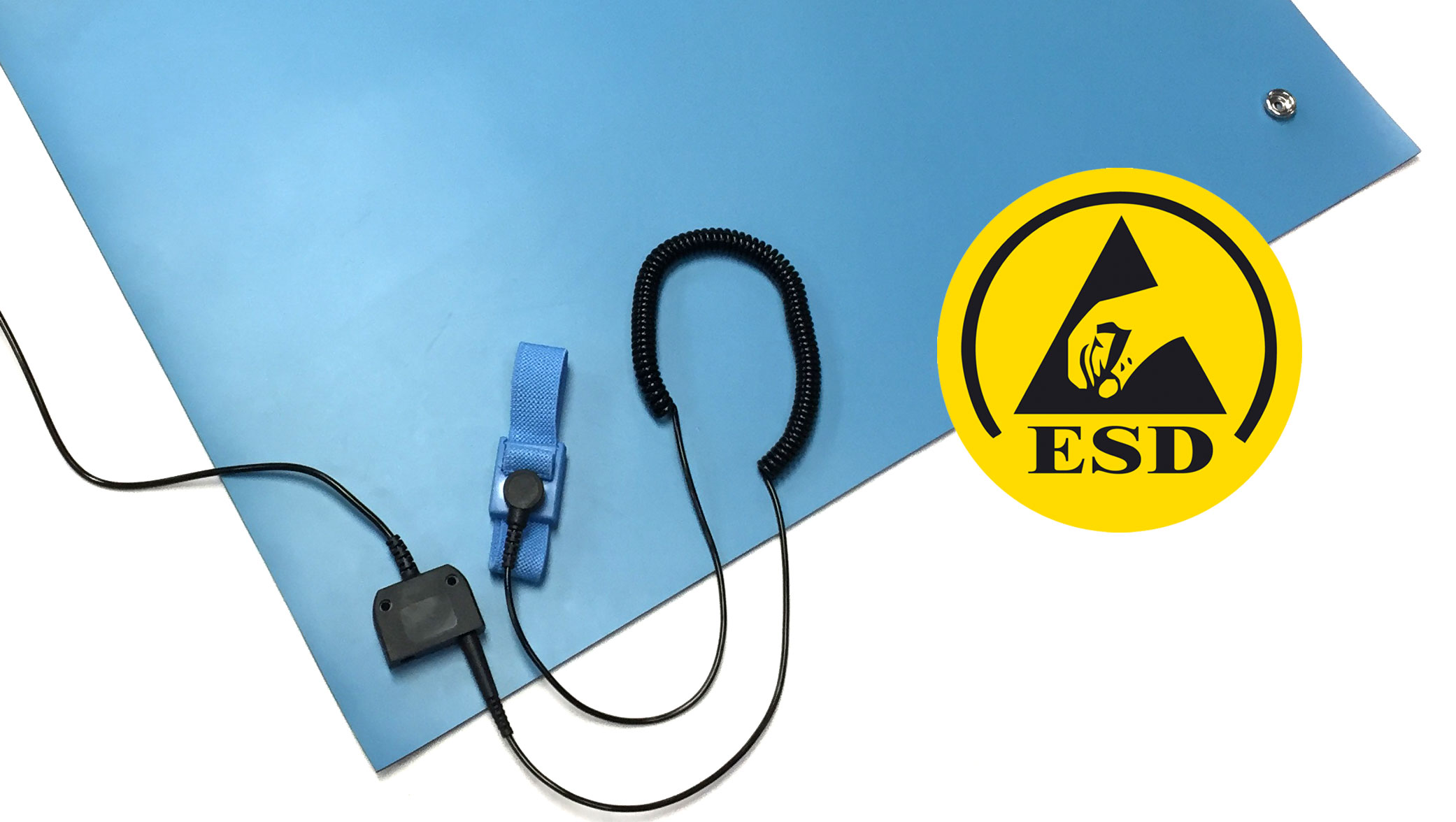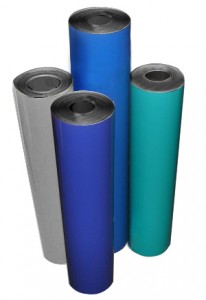How to Choose an ESD Mat
June 16, 2011
 An ESD mat is a very important part of an ESD protected area.  ESD mats are designed to eliminate static on its surface and of objects placed upon it.  It does this by having a conductive material embedded within the mat that collects the static and sends it to ground
An ESD mat is a very important part of an ESD protected area.  ESD mats are designed to eliminate static on its surface and of objects placed upon it.  It does this by having a conductive material embedded within the mat that collects the static and sends it to ground  (earth). This is usually accomplished by connecting the mat to ground (typically the center screw of an outlet) with a ground cord. It’s important to discharge at a slow rate, therefore a resistor in the ground cord is recommended.
(earth). This is usually accomplished by connecting the mat to ground (typically the center screw of an outlet) with a ground cord. It’s important to discharge at a slow rate, therefore a resistor in the ground cord is recommended.
A quick search online or in ESD catalogs reveal a myriad of ESD mat options.  What are the main considerations in choosing an ESD mat?
ESD Mats: Material Types:
ESD mats are generally found in two categories: Vinyl and Rubber.  ESD Rubber mats are the most widely used mat material because they have a high resistance to heat and most chemicals. ESD Vinyl mats are also used for tabletop or work surface applications. They are easy to cut, and some varieties provide cushion. The type of material is a primary concern if you will be using a constant monitor because some materials are incompatible with certain constant monitors.
ESD Mats: Composition:
ESD mats are available in single, two and three layer material. Mats are made of a single homogenous conductive layer material, two layers of static dissipative rubber material or vinyl with a conductive material sandwiched between two layers. Thickness, texture, and cushioning of the mat are also concerns depending on the application. Regardless of composition, all mats should meet or exceed the requirements of ANSI ESD-S20.20.
ESD Mats: Sizes:
ESD matting typically comes in 50′ or 60′ rolls in four standard widths: 24″; 30″; 36″ and 48″. The material is easy to cut and has a long shelf life so if you have more than one area to cover or expansion is a possibility,  purchase a full roll and cut pieces as needed. Many suppliers also provide ready-to-use pre-cut mats with grounding hardware already installed. These mats can be more expensive, but it can also be a great time saver.
purchase a full roll and cut pieces as needed. Many suppliers also provide ready-to-use pre-cut mats with grounding hardware already installed. These mats can be more expensive, but it can also be a great time saver.
ESD Mats: Electrical Performance:
All static control mats are not created equally. The ESD mat’s long-term electrical properties are tantamount to successfully controlling an ESD event. The terms insulative, conductive, and dissipative are all terms that subdivide ESD materials based on their individual surface resistance. Surface resistance is a measurement of how easily an electric charge can travel across a medium (Visit here to learn How To Test ESD Mats). Conductive materials have a surface resistance of less than 1 x 10 5 ohms/square. Dissipative items have a surface resistance of more than 1 x 10 5 ohms/square but less than 1 x10 11 ohms/square. An insulative material is one that has a surface resistance of greater than 1 x 10 12 ohms/square. Based upon your application, ESD mats should be in either the dissipative or conductive range. Something insulative is not considered ESD safe.
Conclusion:
When choosing an ESD mat, first use your specific application to narrow your choices, such as mat material and electrical properties. Carefully plan and budget your workstation so that you can choose to purchase a full roll or a pre-cut mat. Finally, do not let cost dictate your decision – saving a few dollars on low-quality matting could have very costly consequences via catastrophic damage, latent failures and customer complaints.
For help choosing your ESD mat, please call Transforming Technologies at 419-841-9552 or email info@transforming-technologies.com
